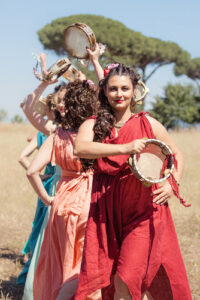 Zweig’s memoir chronicles the descent into dystopia and the multiple displacements triggered by war — features of the life of his generation that also impacted Rudolf Laban. Yet there is another side to the history of this period, one captured in Larraine Nicolas’s chronicle, Dancing in Utopia.
Zweig’s memoir chronicles the descent into dystopia and the multiple displacements triggered by war — features of the life of his generation that also impacted Rudolf Laban. Yet there is another side to the history of this period, one captured in Larraine Nicolas’s chronicle, Dancing in Utopia.
The book focuses on Dartington Hall, a rural estate in southwest England purchased by the wealthy Elmhirsts in 1925. The couple aimed to create a community where industry and agriculture were carried out scientifically and where the arts would be available to all workers. Their utopian program included not only folk and social dance, but also dance as an art form.
Such progressive support was not only appealing but increasingly necessary for Laban’s protégés, Kurt Jooss and Sigurd Leeder, and their dance company. As the Nazification of arts in Germany intensified, they found refuge at Dartington, and were instrumental in later providing a safe haven for Laban just before the start of WWII.
Through the industrial and agricultural enterprises at Dartington, Laban was introduced to F.C. Lawrence, and a new chapter of his career opened – the study of manual labor in industries essential to the war effort.
